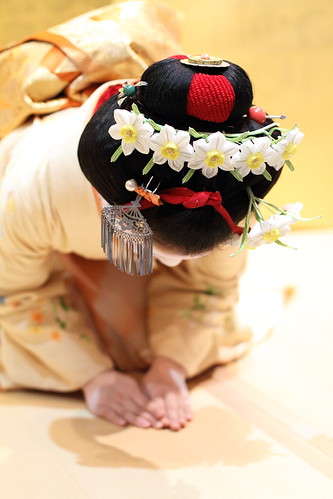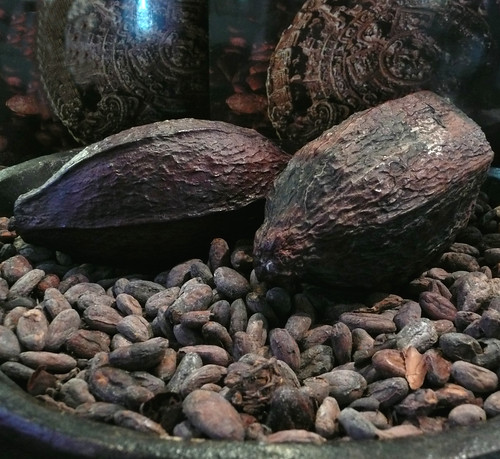Osmanthus Oolong by Providence Perfume Co.
The notion of tea usually creates an expectation of something muted, subtle, abstract and subdued. Osmanthus Oolong by Providence Perfume Company has taken me all by surprise: instead of cup of steaming tea, I got a roaring animal, purring and demanding my full attention. Almost as surprising as getting up close to a daffodil and discovering that it's full of carnal energy.
Osmanthus Oolong begins with a burst of the exotic and unfamiliar - which must be from the aglaia flowers (which I have never smelled in my life). This perfume renders an otherwise Chinese botanicals theme with an intricate East Indian richness: dirty-animalic, sensuous, and honeyed blossoms dripping fruity nectar.
There is a vibrant citrusy blood orange in the opening; fruity yet heady red champaca, and jam-like davana, and an undercurrent of leathery-indolic nuances that remind me of hyraceum (African Stone) and naughty jasmines. But what’s most outstanding about this perfume is that the osmanthus, an essence that I find to be extremely introvert and shy - really radiates all its beautiful qualities here: fruity oubturst of fuzzy dried peach and juicy apricot, a succession of tiny fragrant blossoms cascading from a tree, and an underlining animalic leather - all steeped into a strong, sweet tea.
As it turns out, there are several tea tinctures and essences in the making of Osmanthus Oolong - and each adds depth and a unique quality the echoes and complements the osmanthus: Black tea tincture for astringent leatheriness, green tea absolute for its hint of apricot and ionones, and rooibos absolute for the full-bodied, honey-like and fruity sweetness.
Top notes: Bergamot, Aglaia
Heart notes: Osmanthus, Jasmine, Apricot, Peach
Base notes: Black tea, Green tea, Rooibos
Osmanthus Oolong begins with a burst of the exotic and unfamiliar - which must be from the aglaia flowers (which I have never smelled in my life). This perfume renders an otherwise Chinese botanicals theme with an intricate East Indian richness: dirty-animalic, sensuous, and honeyed blossoms dripping fruity nectar.
There is a vibrant citrusy blood orange in the opening; fruity yet heady red champaca, and jam-like davana, and an undercurrent of leathery-indolic nuances that remind me of hyraceum (African Stone) and naughty jasmines. But what’s most outstanding about this perfume is that the osmanthus, an essence that I find to be extremely introvert and shy - really radiates all its beautiful qualities here: fruity oubturst of fuzzy dried peach and juicy apricot, a succession of tiny fragrant blossoms cascading from a tree, and an underlining animalic leather - all steeped into a strong, sweet tea.
As it turns out, there are several tea tinctures and essences in the making of Osmanthus Oolong - and each adds depth and a unique quality the echoes and complements the osmanthus: Black tea tincture for astringent leatheriness, green tea absolute for its hint of apricot and ionones, and rooibos absolute for the full-bodied, honey-like and fruity sweetness.
Top notes: Bergamot, Aglaia
Heart notes: Osmanthus, Jasmine, Apricot, Peach
Base notes: Black tea, Green tea, Rooibos





